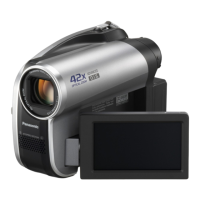
Do you have a question about the Panasonic VDR-D50 and is the answer not in the manual?
| Digital zoom | 2000 x |
|---|---|
| Optical zoom | 42 x |
| Image stabilizer | Yes |
| Focal length range | 1.8 - 75.6 mm |
| Sensor type | CCD |
| Total megapixels | 0.3 MP |
| Optical sensor size | 1/6 \ |
| Display diagonal | 2.7 \ |
| Minimum illumination | 2 lx |
| USB 2.0 ports quantity | 1 |
| Compatible memory cards | SD, SDHC |
| Product color | Black, Silver |
| Depth | 128.6 mm |
|---|---|
| Width | 52.8 mm |
| Height | 89.5 mm |
| Weight | 400 g |
Safety warnings and cautions for operation, installation, and electrical hazards.
Information on CE marking and electromagnetic compatibility of the device.
Instructions for proper disposal of electronic waste according to regulations.
Manufacturer liability disclaimer and copyright observance guidelines.
Initial setup, parts identification, and handling before operation.
Basic configuration settings like date, time, and display.
Identification and adjustment of the LCD monitor and viewfinder components.
Details on compatible batteries, counterfeit warnings, and charging procedures.
Step-by-step guide for installing and removing the camera battery.
Tables showing recordable times based on battery type and recording mode.
Information on various disc formats and incompatible types.
Formatting and usage of DVD-RW discs, including format type selection.
Precautions for handling discs to prevent damage and ensure performance.
Step-by-step instructions for inserting and removing discs from the compartment.
Guidelines for handling SD cards, including environmental and data protection advice.
Procedure for inserting and removing SD cards, with safety warnings.
How to power the camera on/off and switch between recording/playback modes.
Steps for accessing and operating the camera's menu system.
How to change the language displayed on the camera's screen.
A list of menu categories and their corresponding functions.
Guide to setting the camera's date and time, including display format options.
How to adjust brightness and color level of the LCD monitor.
How to adjust the viewfinder's brightness and field of view.
Fundamental steps for recording motion pictures and still images.
Advanced recording functions and effects using icons and menus.
Proper camera holding techniques and explanation of auto mode functions.
Steps to record motion pictures, including screen indications and controls.
Details on recording modes (XP, SP, LP) and their recordable times on discs.
Procedure for recording still images onto an SD card, with screen indications.
Options for adjusting resolution and quality for still pictures.
How to use the zoom lever for varying magnification levels.
Explanation of digital zoom capabilities and the zoom microphone feature.
How to activate and deactivate the image stabilizer to reduce camera shake.
How to select operation icons to apply recording effects.
Visual guide and explanation of operation icons for video and picture recording modes.
Explanations for backlight compensation, fade, help mode, color night view, and soft skin.
How to use the self-timer for recording still pictures with the user included.
Settings for guidelines, aspect ratio, wind noise reduction, and slow shutter.
Activating manual controls for white balance, aperture, shutter speed, and focus.
Using scene modes for different shooting conditions and manual focus adjustment.
Step-by-step guide for manually adjusting white balance.
Information on the white balance sensor and its operational precautions.
How to manually adjust shutter speed and aperture/gain for exposure control.
Playing back recorded motion pictures using camera controls.
Tools for managing recorded scenes and files, including deletion and division.
Operations for finalizing, formatting, and protecting discs and SD cards.
Connecting and using the camera with external devices like TVs and printers.
How to play, pause, fast forward, and rewind motion pictures.
Controls for slow-motion, frame-by-frame playback, and speaker volume adjustment.
Resuming from stopped points and selecting scenes by date.
Steps to create custom playlists and play them back.
How to play back still pictures and use slideshow features.
Procedures for deleting individual or multiple scenes/files.
How to split a recorded scene into two separate parts.
How to merge two consecutive scenes into a single one.
Steps to create a new playlist by adding favorite recorded scenes.
How to delete or add scenes to an existing playlist.
How to reorder scenes within a playlist.
Prevents accidental deletion of still picture files by locking them.
Setting print data for selected still pictures for printing services.
Makes discs playable on other devices; essential for DVD-RW/R/DL compatibility.
Restores recording capability to a finalized DVD-RW (Video format) disc.
Protecting discs from deletion and viewing disc status information.
Procedures for initializing discs and SD cards, erasing all data.
Connecting the camera to a TV for playback of recorded content.
Playing back discs on DVD recorders/players and dubbing content to hard disks.
Transferring recorded scenes to a VCR for archiving or editing.
Connecting to a PictBridge printer for direct photo printing.
Options to set paper size and page layout for printing.
Connecting the camera to a PC and installing necessary software.
Operating the VideoCam Suite software and using the SD card reader on Mac.
Capabilities like playback, copying, and editing images using the supplied PC software.
Necessity of Adobe Reader for viewing the operating instructions.
System requirements for PC compatibility with VideoCam Suite.
Step-by-step guide to install the VideoCam Suite software on a PC.
Procedures to remove the VideoCam Suite software from the PC.
Steps to connect the camera to a PC and ensure it is detected.
How the PC displays camera media and how to copy files.
Procedure for safely disconnecting the USB cable to prevent PC errors.
How to launch and use the VideoCam Suite software on a PC.
How to use the SD card reader function on a Macintosh computer.
Explanation of camera indicators and troubleshooting/FAQ sections.
Explains icons and indicators displayed during motion and still picture recording.
Explains indicators for playback and system status like low battery.
Messages related to disc reading, compatibility, and finalization status.
Error messages for system issues and procedures for data recovery.
Lists functions that cannot be used at the same time due to unit limitations.
Answers common questions regarding disc usage and playback compatibility.
Checkpoints for issues like unit not powering on, auto-off, or unresponsiveness.
Solutions for problems with disc reading, recording, and the eject mechanism.
Guidance for focus problems, sound issues, TV connection, and file deletion/editing.
Solutions for SD card recognition failures and PC connection issues.
How to safely disconnect the USB cable to prevent PC error messages.
Warnings regarding usage in specific environments and proper handling.
Guidelines for battery storage, charging, and AC adapter usage.
Explains causes of condensation and provides tips to prevent it.
Legal notices regarding product licenses, patents, and trademarks.
Explains how white balance adjustments work and their purpose.
How auto focus operates and its limitations in various shooting scenarios.
Describes scenarios where auto focus may struggle, like low contrast or fast subjects.
Detailed technical specifications of the DVD video camera.
Technical details for recording media, compression, and the AC adapter.
Tables showing how many pictures can be stored based on SD card size and quality.

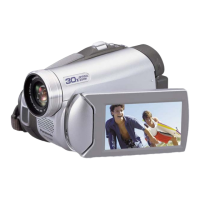
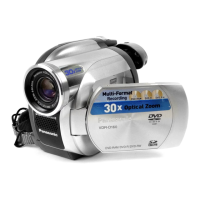
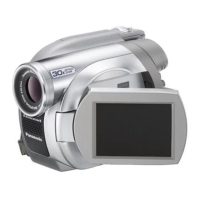
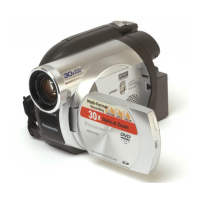
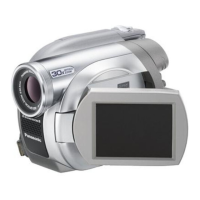
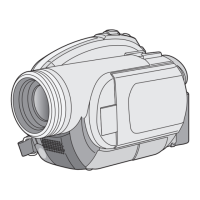
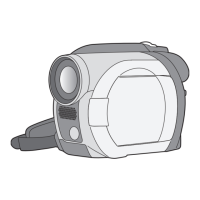
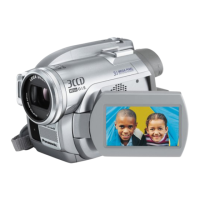
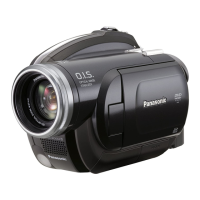
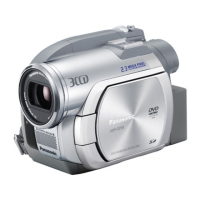
